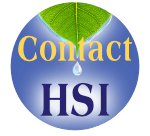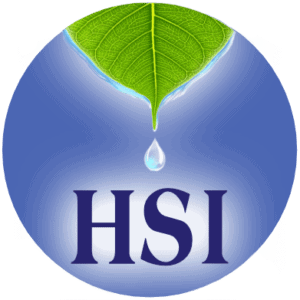Barbara Seideneck, CHom, CCH
Homeopathy in a nutshell? Absolutely – quite a few homeopathic remedies are made from nuts and sometimes help with nut allergies. But for now, I am using the nutshell expression to demonstrate how homeopathy works, in the shortest way possible.
Originally Dr. Samuel Hahnemann in the “Organon der Heilkunst”, 1810, defined homeopathic treatment. The latest edition published in 1996 by Brewster-Reilly “The Organon of the Medical Art” depicts Hahnemann’s treatment principles as valid now as they have been for a little over 200 years. The foundational principles of homeopathy are described below:
Homeopathic Principles
The Vital Force
The all-encompassing concept about healing with Homeopathy is to stimulate the body’s Vital Energy so that a person’s system can balance itself and bring about cure. Homeopathic treatment triggers an internal self-healing response.
Like Cures Like or “Similia Similibus Curentur”
Homeopathy is based on the Law of Similars which is an ancient healing principle stating “like cures like.” Simply put, a substance capable of producing certain symptoms when given to a healthy person will cure those symptoms in a person during an illness. For example: Peeled onions normally cause watery, burning eyes. A homeopathic remedy prepared from onions (Allium Cepa) can alleviate the symptom of watery, burning eyes experienced with hay fever.
The Law of Similars is the root of homeopathic treatment. Homeopathy as vibrational medicine uses homeopathic remedies (highly diluted natural substances) to trigger an immune system response to fight off illness. This only works when there is similarity between the symptoms of the illness and the symptoms that a substance can cause in a healthy individual during a proving (homeopathic drug test).
Hahnemann discovered this principle while translating 20 major medical texts, written in a variety of languages, into German. In 1795, in response to a comment by the Scottish physician William Cullen, Hahnemann tested this concept on himself by ingesting several doses of China (Cinchona Officinalis or Peruvian bark). He temporarily developed the symptoms of Malaria and recorded these symptoms, making this experience his first homeopathic proving. Since then China has been used to treat this disease for centuries to come.
Provings
Provings are Homeopathic drug tests and were historically the first official drug tests in the US. Homeopathic remedies have been proven since Hahnemann’s own experience with China in 1795. Provings are conducted with volunteers (provers) and supervisors throughout the world. At the end of each proving the proving data for a particular remedy is added into the Homeopathic Materia Medica – now recorded in hundreds of books and also available as software. While Hahnemann tested 100 remedies during his lifetime, over 5,000 homeopathic remedies are available now.
Totality of Symptoms
Hahnemann defined symptoms as the external expression of an internal imbalance. He implied that only by considering the “totality of symptoms” (sum of all symptoms) an individual’s total state of health would be revealed. And, only when all of these symptoms were considered, healing happens from the inside out.
A “Simillimum” – the perfectly matching remedy – is found when a sum of significant symptoms experienced by a person match the remedy profile recorded in the Materia Medica. The “Simillimum” would then restore health on all levels – mentally, emotionally and physically.
Minimum Dose
The ultimate goal of homeopathic treatment is to achieve a maximum curative effect with minimum impact. (Samuel Hahnemann: “The highest ideal of cure is the rapid, gentle and permanent restoration of health”). With the appropriate homeopathic remedy a one-time dose of a highly diluted remedy can often achieve maximum benefits for extended periods of time, without side effects.
Dilution and Potentization
Homeopathic remedies are highly diluted, often millions of times – rendering them absolutely non-toxic. These remedies still have a powerful effect because they are also “potentized”. Potentization happens through “succussion”. This word describes a shaking process that leaves an energetic imprint on the diluted remedy in the bottle. Remedies get stronger (acting more deeply) from an increased number of succussion. Historically, this was done by whacking the remedy-bottle against a semi-hard surface. Today homeopathic pharmacies use succussion machines for the production of millions of homeopathic remedies.
Potencies and the number of dilutions of a remedy are listed on each bottle. When marked with an X, remedies have been diluted 1:10. When marked with a C, remedies have been diluted 1:100. The number of succussions is usually 100. The number in front of the letter stands for how many times the remedy has been diluted and succussed. 6X, 6 C, 12 X, 12 C are considered to be low potencies and are often used for home and self-care. Potencies above 30 C are considered high potencies. Remedies starting at 200 C are mostly used professionally.
Homeopathy Applied
Self-Care with Homeopathy
Homeopathic remedies appropriate for self-care are often sold at health food or drug stores in the U.S. and in pharmacies around the globe. The remedies, made from natural substances, can be safely used for anyone including infants, children, and the elderly. They are also effective with animals. For centuries homeopathic remedy kits have been a reliable household resource for mothers helping their families. Homeopathic remedies are tasteless, odorless and taken orally. A variety of self-help books can assist in the treatment of acute conditions.
Homeopathic Bookstores
Homeopathy 101
Professional Treatment
When dealing with chronic illness, allergic conditions or effects from long-term ill health professional treatment is needed.
Find A Homeopath
Practitioner Certificate Program
During a professional consultation the homeopathic practitioner starts with a thorough intake to determine a remedy with the potential to initiate a long-lasting cure. This process is described below:
Case Taking
During the professional homeopathic consultation the homeopath aims at recognizing each person’s unique state of health. Two people with the same illness (diagnosis) may respond to their condition differently and develop characteristic symptoms that differ from another. During the 1.5 to 2 hour consultation special attention is paid to these symptoms, which are thoroughly recorded.
Case Analysis
The homeopathic practitioner assesses a wide range of factors, including life-style habits, personal stresses, allergies and food sensitivities and compiles a list of the most significant symptoms to be addressed.
Repertorization
Information gathered during the case taking and organized during the case analysis is referenced with corresponding remedies. This can be done with software or printed versions of the homeopathic Repertory and a variety of Materia Medicas.
Remedy Selection
A personally matched homeopathic remedy (individualized treatment) is used to addresses the patients particular condition aiming at a rapid, gentle and long lasting cure.
The World Health Organization has declared Homeopathy the fastest growing health care modality in the world. This may be due to the low cost of homeopathic medicines, global availability and the positive effects of non-toxic treatment.

